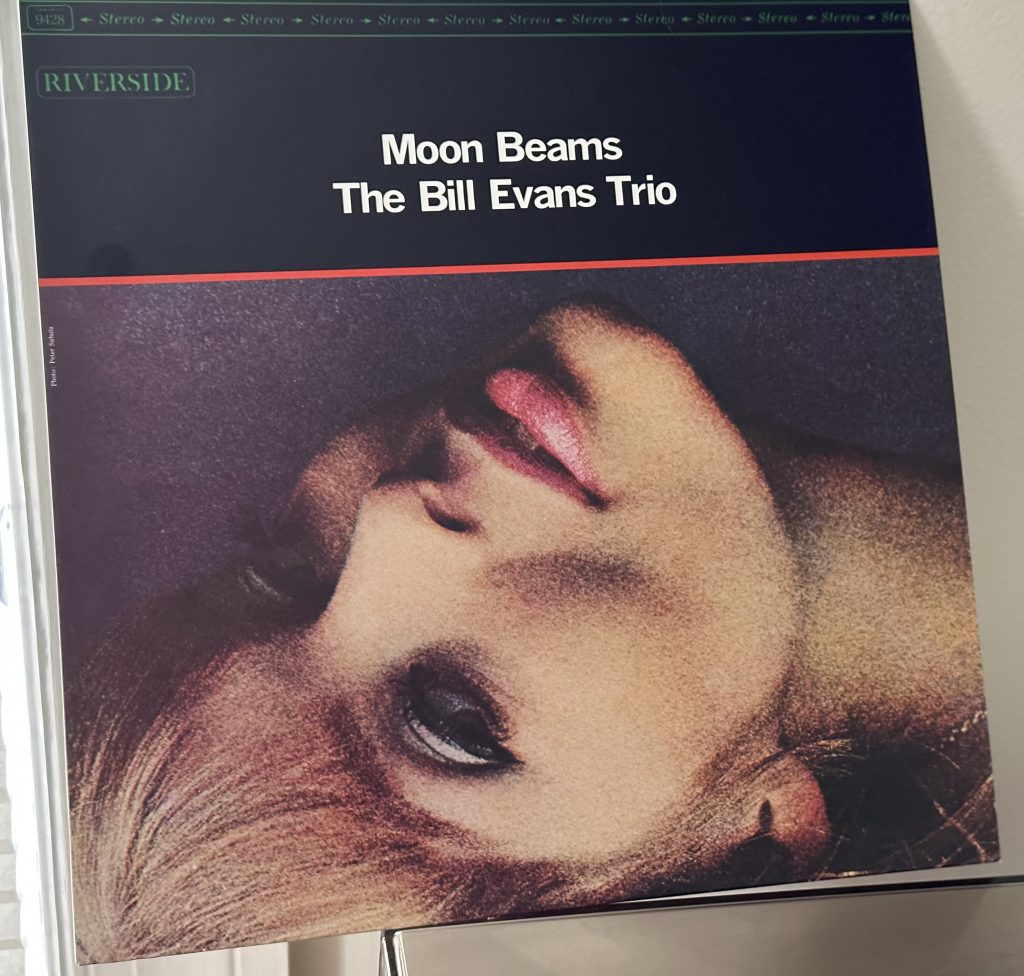
Album of the Week, January 21, 2023
Jazz musicians are often inspired by playing with particular colleagues. Arguably neither Dave Brubeck nor Paul Desmond ever excelled individually the records that they made together. And Miles’ great quintets were defined by the partnership the trumpeter made with saxophonists John Coltrane, then Wayne Shorter. But Bill Evans was inspired by his bassists—first and most famously Scott LaFaro, then following his death with Chuck Israels. It is that collaboration that brings this, the first proper record of the new trio with Israels and drummer Paul Motian, to life.
Evans and his trio entered the Sound Makers Studio in New York on Thursday, May 17, 1962, three days after his second and final session with Jim Hall for Undercurrent was recorded in the same studio. They cut four tunes that day, of which “If You Could See Me Now” appeared on this record. They returned on May 29, June 2, and June 5. The bulk of today’s record was recorded in the June 2 session, along with the more balladic material recorded across the other three dates.
“Re: Person I Knew” is an opening statement that is shrouded in modal mystery. Displaying several Evans hallmarks off the bat, including the out of time entrance, the yearning of the modal pivot between the G minor and D minor, and even the cryptic title (an anagram of the name of the producer who had spurred him to reform his trio, Riverside Records founder Orrin Keepnews). And then there’s the playing of the trio. After the solo statement in the first eight bars by Evans, Israels makes his presence known with a bass line that keeps time while sketching out the space around the open fifth and octaves. Motian’s understated but complex drum fills keep the whole thing moving forward as Evans and Israels breathe, listen to each other, make statements. It’s a powerful performance.
“Polka Dots and Moonbeams,” which lends the album its title, returns to a more normal and less modal tonality, but Evans and Israels continue their duet. Following the first statement of the chorus, Israels begins a complex countermelody that underpins the entire remainder of the song. The conclusion has him bring the tune to an unusually irresolute finish, descending to a relative minor.
“I Fall In Love Too Easily,” the great dark Sammy Cahn/Jule Styne ballad, here drives headlong into the darkness and comes out blinking into the light of a major key. The transition is so gradual that you hardly notice it’s happened until the end, where the pianist underscores the major with a few bars that seem almost like a dance before resolving to the final major chord.
“Stairway to the Stars” is lights down, swaying to the music after midnight, with only Motian’s insistent drum pattern nudging things on away from slumber. Thus roused, Evans plays a rhapsodic variation on the theme over a high obligato in Israels’ bass. The coda, which returns to the feeling of out of time, brings the first side to a close.
Tadd Dameron’s “If You Could See Me Now” opens the second side, with Evans treating the tune as a more straightforward ballad for the initial chorus, then gently swinging into a syncopated restatement of the theme. The interplay between Israels and Evans here is striking and almost telepathic, with the pianist taking a breath as the bassist enters with a chord change or plays the first note of the next verse.
“It Might As Well Be Spring” begins as a yearning statement then seems to take flight, as Evans brings the melody through two choruses and then into a third that almost seems like it’s in double time. Throughout Israels maintains a sort of running commentary that turns outright sly at the end, where after the final chord he seems as though he is playing the beginning of “The Christmas Song” (“Chestnuts roasting on an open fire”) before continuing the downward run one more note.
Jerome Kern’s “In Love In Vain” carries the melancholy burden of being from the last show he worked on before his 1946 death, the musical film Centennial Summer, which also featured “Up with the Lark,” another perennial Evans favorite. Again the dialog between Israels and Evans borders on the telepathic, with the heroic final chorus in particular a stunning example of their collaboration.
The last track, “Very Early,” is the second Evans original on the album, and one that was destined to appear in his setlists for the rest of his life. The tune is in playful Evans mode, as it circles the tone center while keeping things major throughout. Israels’ solo is worth a second listen, as he does some harmonic things that lend an unexpected depth to the musical structure while keeping up a dancing rhythm throughout.
Where some of Evans’ earlier work could be so delicate as to seem tentative, there is joy that rings from these sessions, a feeling of surety and confidence. The album seems to announce that Evans is back, and better than ever; the partnership with Israels was off to a good start.
One interesting side note: another memorable album cover here, with a beautiful model in a provocatively romantic pose. The model is none other than Nico, some five years before her Andy Warhol inspired turn as chanteuse on the Velvet Underground’s debut. Like Evans, there’s more than a hint of sadness behind her smile here.
You can listen to the album here:
